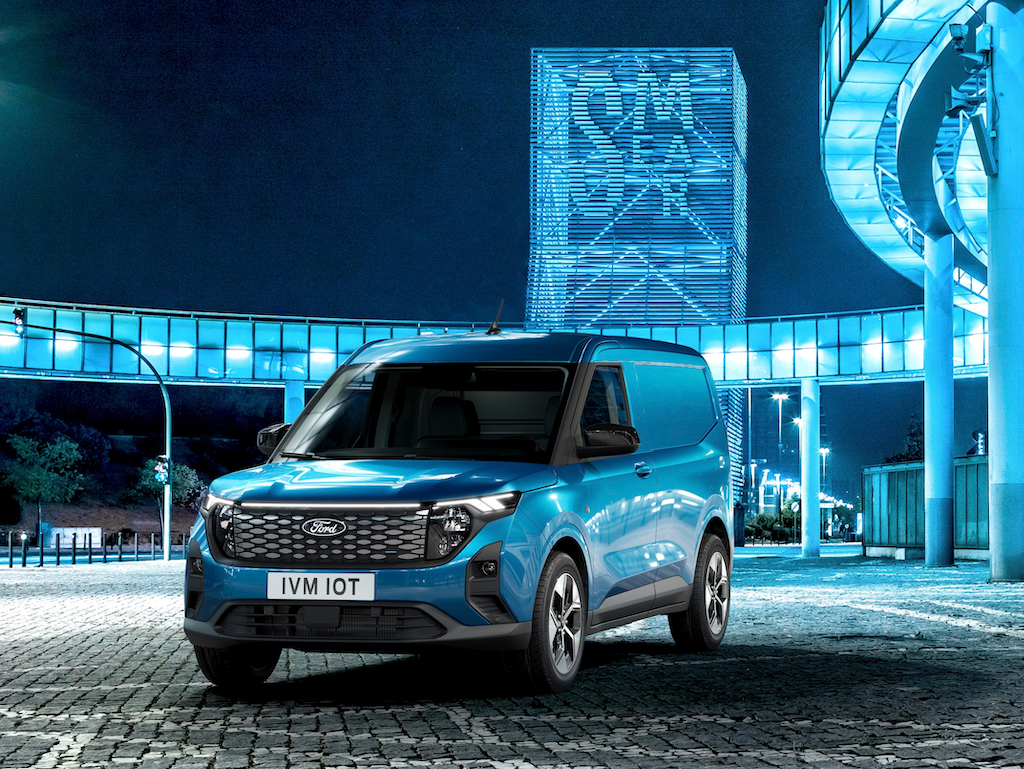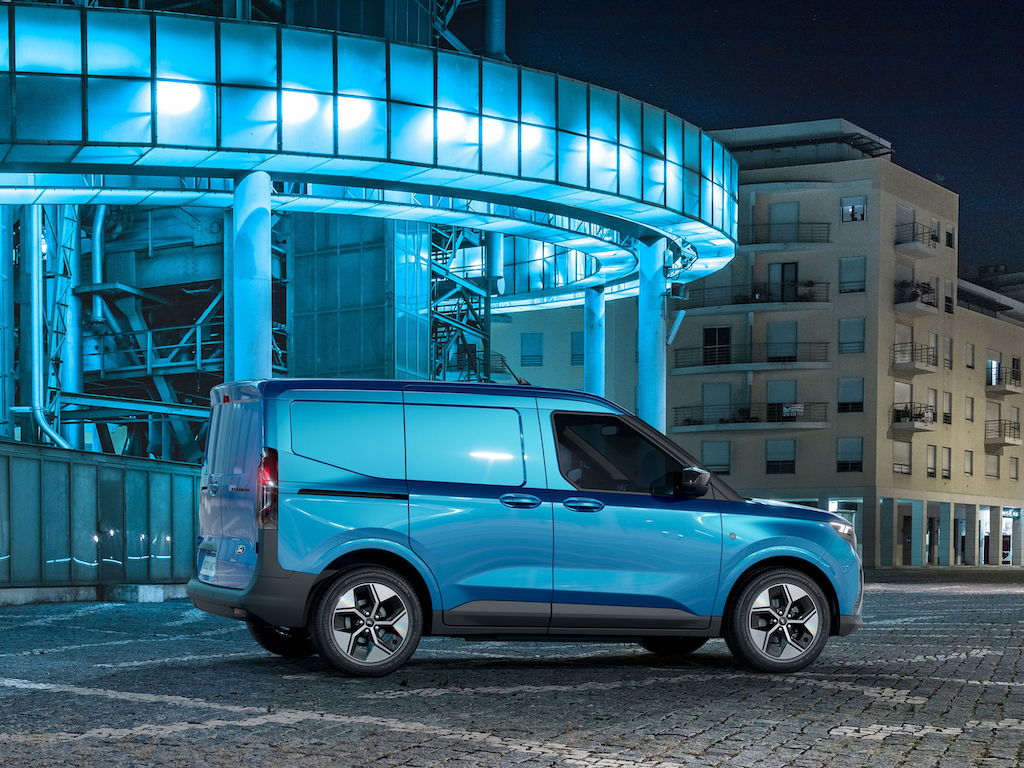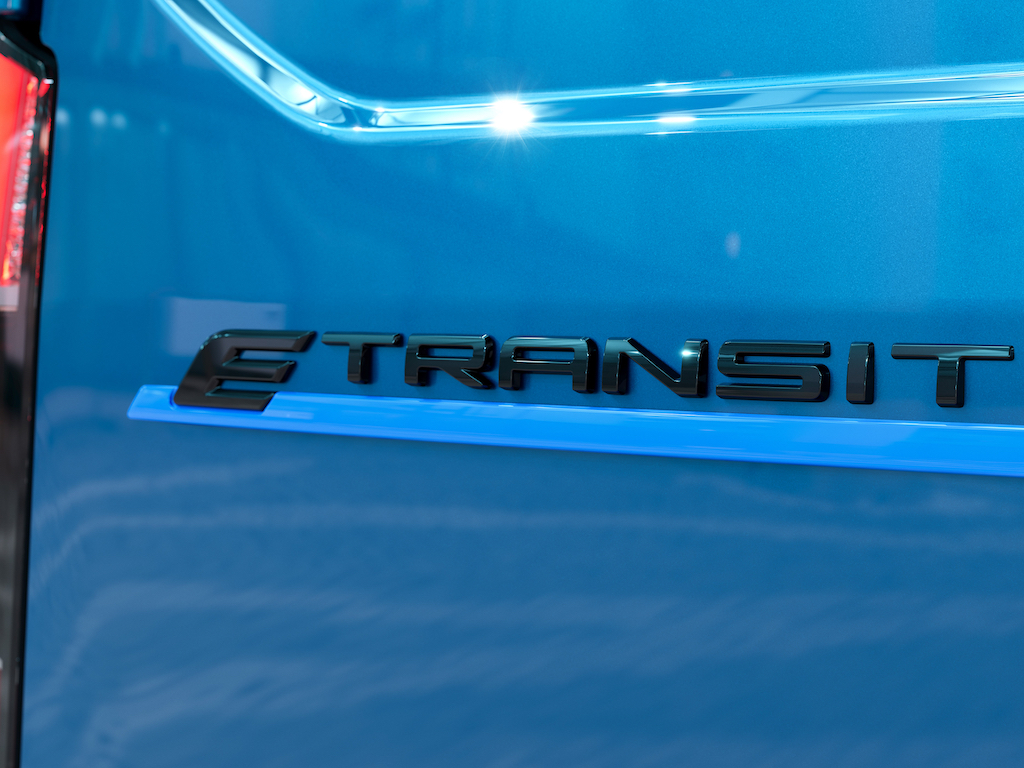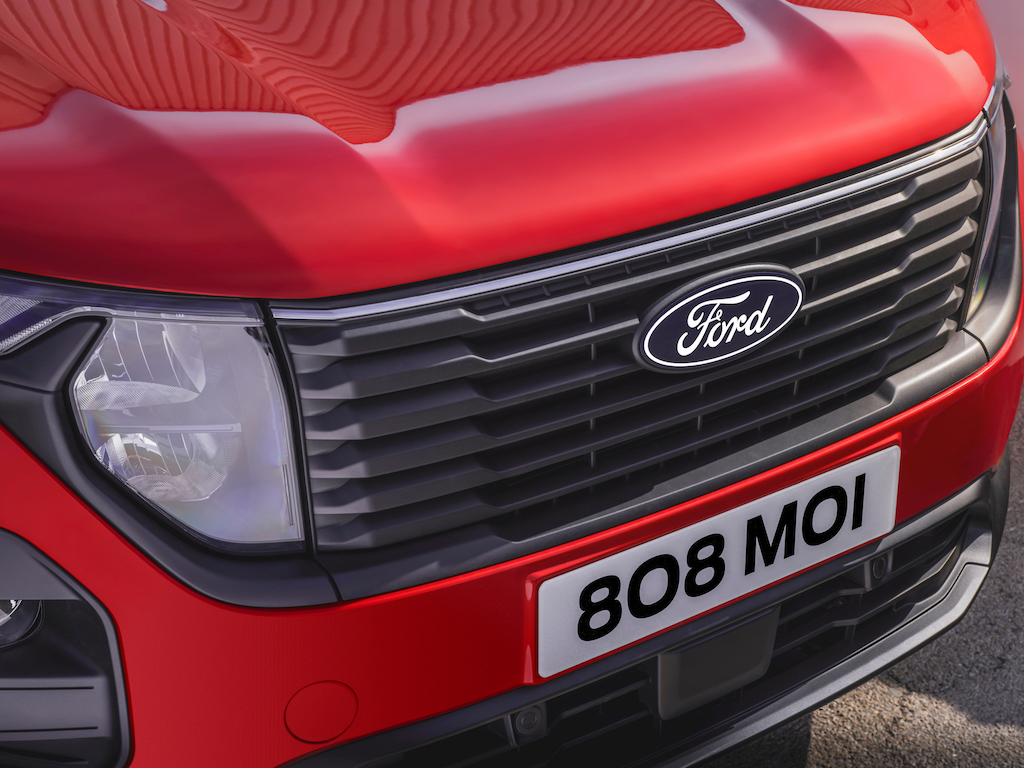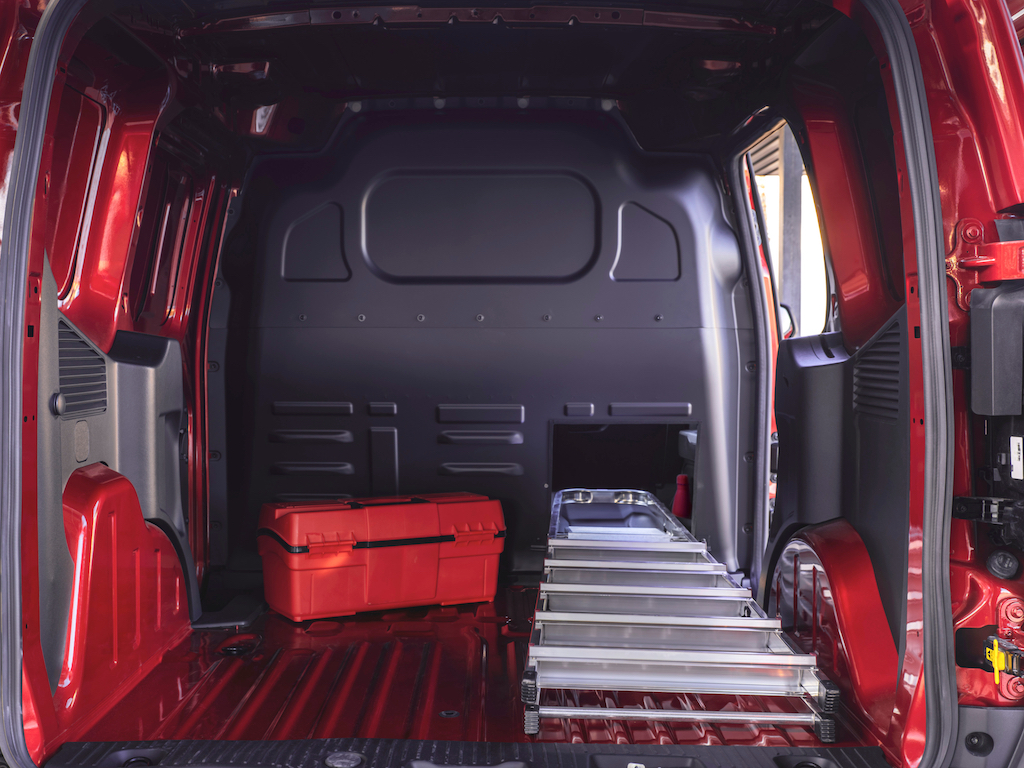Ford reveals new Transit and E-Transit Courier vans
Ford has unveiled the new Transit Courier, which will replace the current model from later this year.
The range will include petrol- and diesel-powered versions, followed by the battery electric E-Transit Courier in 2024.
Ford has made the new Transit Courier larger than the outgoing model. It will be 182mm longer, providing 25% more load volume. The load floor will be 1,803mm long or up to 2,661mm where the optional through-loading bulkhead is fitted. Ford quotes a load volume of 2.9m3 (SAE) for panel van models. E-Transit Courier will offer a gross payload of 700kg, 118kg more than current Transit Courier models. Petrol and diesel models will carry slightly less at 678kg. Ford will offer two variants of the van, a panel van and a double cab in van model with a second row of seats. E-Transit Courier will be able to tow a 750kg trailer, rising to 1,000kg for petrol models and 1,100kg for diesels. Ford suggested that the larger Transit Courier would not compromise the Transit Connect.
Petrol models will be powered by a 125hp variant of Ford’s EcoBoost 1.0-litre turbocharged, three-cylinder petrol engine. Diesel power will come from Ford’s 1.5-litre four-cylinder 100hp turbo motor. A six-speed manual gearbox will be standard for petrol and diesel models with a seven-speed dual-clutch automatic transmission offered with petrol models.
Electric models will be powered by a 134hp electric motor driving the front wheels. Ford would not be drawn on E-Transit Courier’s battery capacity or range, but from the information provided expect a battery of around 60kWh. E-Transit Courier will share its platform with the replacement for Ford’s EcoSport passenger model, which might be the reason that the model has grown larger – to provide enough battery capacity for good range. Ford says that using the on-board 11kW charger will allow 10 to 100% charging using AC three-phase power in 5.7 hours with a 10 to 80% charge in under 35 minutes using a 100kW DC rapid charger.
Ford reckons that non-scheduled maintenance costs for E-Transit Courier will be around 35% less than current petrol and diesel models.
‘One-pedal’ driving will come as standard. Although no further details were given, it is likely to be a similar system to that on the E-Transit where regenerative braking can be set to provide braking under most conditions without using the brake pedal.
Ford has provided a 44-litre storage space under the bonnet – a so-called ‘Frunk’ – providing space to hold charging cables. Standard equipment will include a full-height steel bulkhead with a mesh protected window and loadthrough hatch as options.
The new van will be offered with advanced security features. These will include volumetric sensors to detect movement inside the vehicle, a perimetric alarm triggered by opening the doors or bonnet and a double locking feature to prevent entry by smashing the windows and using the inside door handle to open the door.
In the cab, E-Transit Courier will be fitted with a 12-inch Sync4 touchscreen as standard, while petrol and diesel models will have an eight-inch touchscreen as standard. Electric models will also have a 12-inch ‘digiboard’ cluster in front of the driver.
Convenience features will include an optional folding flat surface for laptops/tablets, an electric handbrake and column mounted gear shift, as well as a large centre console with configurable and removable storage elements.
E-Transit Courier will feature a range of standard driver assistance systems including automatic high beam, cruise control, front and rear parking aids, hill launch assist, driver alert, intelligent speed assist, lane keeping system, pre-collision assist, rear view camera, traffic sign recognition and wrong way alert. A built-in modem will also be standard.
Electric variants will come with three driving modes: Normal, Eco to boost range and Slippery for poor grip conditions.
All new Transit Courier models will be built at the Ford Otosan plant in Craiova, Romania.

